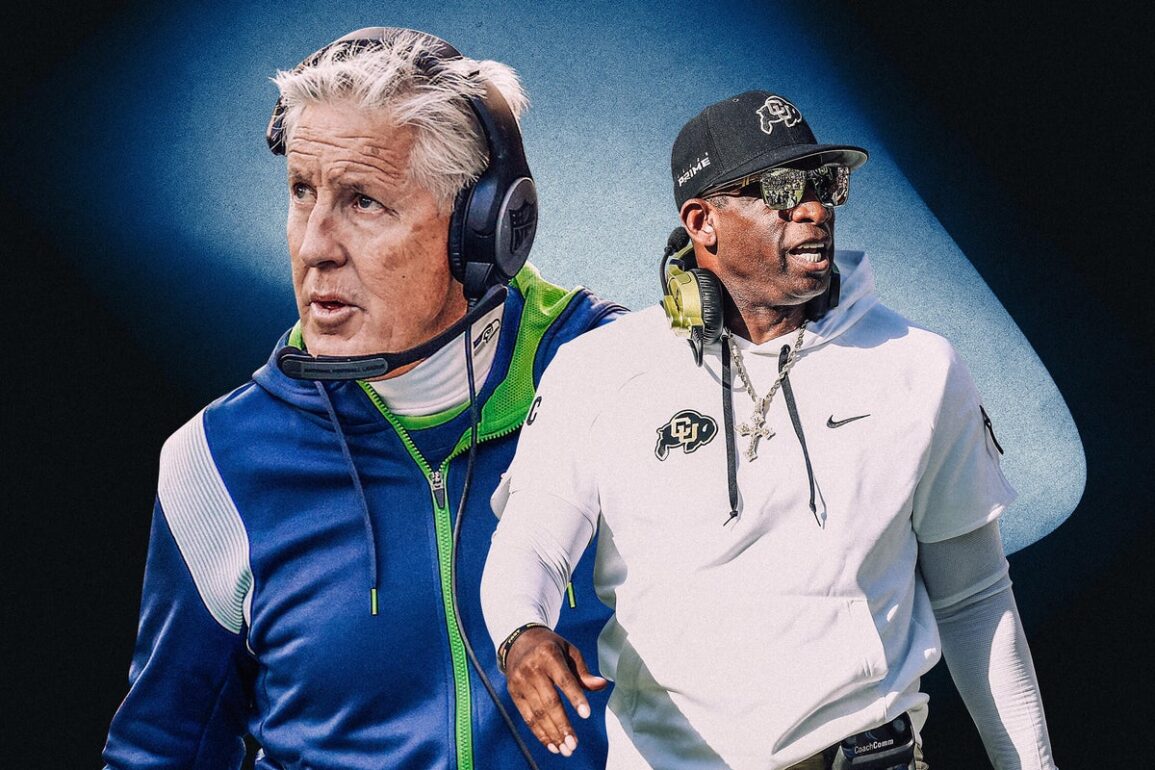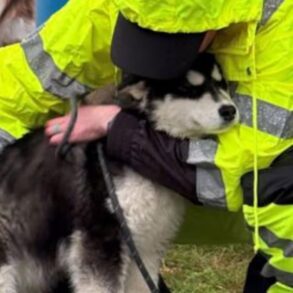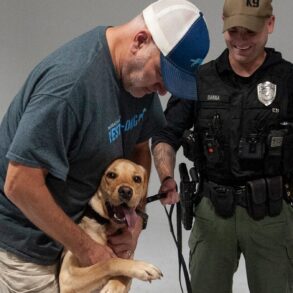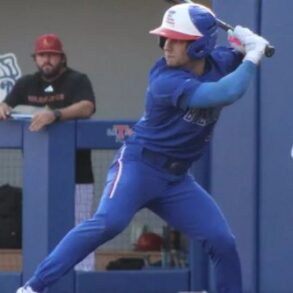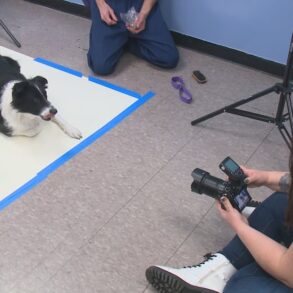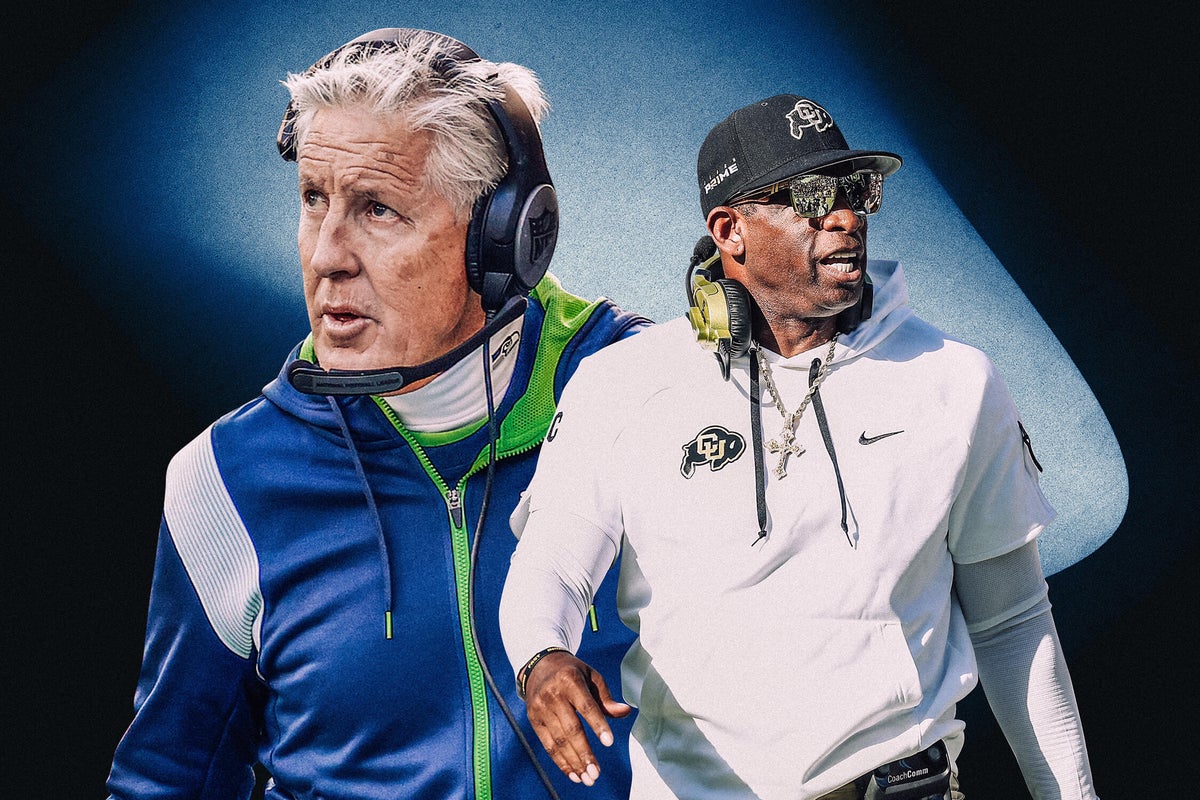
Editor’s note: This story is part of Peak, The Athletic’s new desk covering leadership, personal development and success through the lens of sports. Peak aims to connect readers to ideas they can implement in their personal and professional lives. Follow Peak here.
Football fans know Pete Carroll as the fist-pumping, bubble-gum-chomping well of exuberance, so it shouldn’t be shocking that he established alternative means of inspiring his teams. But one source of motivation in particular became one of his all-time favorites. So much so that Ben Malcolmson, his right-hand man of 14 years at USC and the Seattle Seahawks, knew to keep a specific YouTube video in the team-meeting rotation:
A three-legged dog chasing a car.
Advertisement
Carroll would explain to his teams over the years: It doesn’t matter what challenges you’re facing or whatever you’re going through individually or as a team, a three-legged dog still chases cars. The dog lost a leg, but it doesn’t change his wiring, DNA or his ability to do what he wants to do.
The video is still out there somewhere, Malcolmson promises. He’s seen it too many times to count. Because Carroll, now 73 and now the head coach of the Las Vegas Raiders, found the ideal metaphor to relay his message: That limits only apply to those who believe in them in the first place.
Carroll is not alone. The animal kingdom has long offered coaches in all sports no shortage of symbolism and imagery as a source of motivation.
The late Mike Leach, known for pontificating on theoretical blockbuster animal battles, cued up videos of a particular animal before games and tied a theme to each one. Former LSU defensive coordinator John Chavis inspired one of the best players in the country, Tigers safety Tyrann Mathieu, when he pulled up a viral video of a honey badger on the team bus after a game against West Virginia in 2011. Chavis told the hard-hitting yet undersized safety to embrace the ethos of a honey badger, which fearlessly takes on venomous cobras and swaths of bees without fear of repercussion.
The oldest known examples of figurative art depictions of animals are in an expansive cave system in Lascaux, France, where humans drew over 6,000 representations of animals, ranging from stags and bears to oxen and big cats. Nearly 21,000 years later, Jim Harbaugh sat in front of a throng of reporters before the 2024 College Football Playoff national championship explaining why, on the eve of the title game, he decided to show the Wolverines a documentary on wolves.
“The perfect fighting unit to me is a pack of wolves,” Harbaugh said before Michigan’s 34-13 win over Washington. “You see them gather together before the fight, you see them together going to the fight, you see them together in the fight, you see them celebrating after the fight. The active word there is together.”
Advertisement
And together, humans are naturally drawn to be in collective awe of animals.
The question is: Why is the animal kingdom a good form of motivation?
When an individual or mutual goal is identified, the science of human motivation can be distilled to three tenets:
“They focus their attention, they give effort and they prepare to persist,” said Dr. Richard Koestner, a motivational psychologist at McGill University in Toronto.
Koestner, who teaches a course on sports psychology at McGill, said metaphors are among the best ways for coaches to enhance learning and performance. By showing videos of the animal kingdom, coaches can make abstract concepts relatable and understandable.
“For instance,” Koestner said, “explaining resilience through an animal metaphor like the eagle, which symbolizes strength and adaptability, can be more impactful than a dry definition.”
When Trevor Reilly attended a team meeting as a rookie for the New York Jets in 2014, coach Rex Ryan showed two animal videos as examples to embolden defensive players. One was a cheetah running down a wildebeest and making the most necessary of tackles. The other was more obscure. When speaking to the defensive line about anticipating the offense’s snap count, Ryan pulled up a video of a horse reacting to being branded so quickly that it kicked a man out of the frame.
“He’d say, ‘You have to go from zero to 100 real quick, just like this,’ ” Reilly said. “The randomest thing ever, but it was so funny.”
Reilly later joined Deion Sanders’s staff at Jackson State and then Colorado as an assistant coach, who was also in charge of putting together Sanders’ daily meetings. One of the fastest players in NFL history, Sanders reportedly ran a 4.27 40-yard dash at the 1989 NFL Combine, and he loves cheetahs.
Before a game against Oregon State in November 2023, as the Buffaloes were coming off of back-to-back losses, Sanders had Reilly include a video differentiating a farm cow from a buffalo, noting that when a storm rolls in, cows may get spooked and seek shelter, but the buffalo herd doesn’t flinch.
Advertisement
Dr. Lee Kesting, professor of animal behavior at Carroll University in Waukesha, Wis., said there is a theory that explains our fascination with animals. It’s called the biophilia theory, which suggests humans have an innate desire to seek connection with nature and other forms of life.
The late famed sociobiologist Edward O. Wilson penned a book called “Biophilia” in 1984, and argued that our connection to nature is the very essence of our humanity. We exist, he wrote, to co-exist with the natural world.
“As part of that theory, humans are drawn to wild animals or even the wild as an entire concept,” Kesting said.
In a podcast appearance last fall, Boston Celtics head coach Joe Mazzulla, fresh off leading the Celtics to their 18th NBA title, explained why he believed the animal kingdom was a good reference point for role definition in sports.
“The animal kingdom is the most purest form of hierarchy and role definition that there is,” he said. “Everybody plays their role. If you step outside of it, you get killed. If you try and do something with a sense of pride or arrogance, you probably get killed. If you stay within the lines, you know, you survive for as long as you can — until you don’t anymore.”
To compare the gravity of a game to the life-or-death scenario of a lion going toe to toe with an elephant or a buffalo escaping the jaws of a crocodile is hyperbolic. But experts say such scenarios can serve as a relaxing method of motivation.
“There is science that there is something valuable in watching animals,” said Dr. Reggie Gazes, a professor of animal behavior psychology at Bucknell University. “There’s science to suggest that even just watching animals increases your levels of happiness, increases your relaxation and can decrease heart rate and blood pressure.”
Advertisement
Athletes also seek out animals to self-motivate. Kenyan sprinter Ferdinand Omanyala honors the cheetah with a specific stretch. American Olympic gold medalist swimmer Caeleb Dressel studies videos of dolphins.
One of the most gracious compliments a coach, opponent or fan can bestow upon an athlete is not saying they’re a great player or a superstar, but rather a dog. The Arizona Diamondbacks’ postseason motto last year was “Be a Dog.”
“The dog is a smart, quick-moving, fast-functioning animal that can search on his own, and can hunt together,” Arizona manager Torey Lovullo said last fall. “That’s something we encompass and believe in.”
Former Fairleigh Dickinson head coach Tobin Anderson showed his basketball team a video of a lion attacking an elephant just before taking the floor as a No. 16 seed in the 2023 men’s NCAA Tournament. Anderson told his team the result against No. 1-ranked Purdue would be decided not by size, but by heart. A few hours later, FDU became only the second No. 16-seeded team in tournament history to topple a No. 1.
“We knew we had to have that type of mentality coming into the game,” former guard Brayden Reynolds said. “We have heart. It’s heart over height and it spoke volumes today.”
One of the earliest and most-viewed animal videos on YouTube is a grainy, eight-minute-and-24-second video captured by safari goers in South Africa’s Kruger National Park. Uploaded on May 3, 2007, it’s an exhilarating and sometimes hard-to-make-out ride in which an African Buffalo calf is attacked by a pride of lions on land and not one but two crocodiles in the water.
It’s a video that several coaches have used over the years to explain to players that if you work together, if you refuse to concede, you’ll always have a chance. As the calf is going through hell for several minutes, the herd of buffalo eventually comes to its rescue and bullies off the pride of lions.
Advertisement
“And, on top of that, it’s an underdog story,” Gazes said.
It’s everything any coach seeking that extra competitive inch could ever want.
“We’re social animals,” said Dr. Joshua Russell, anthrozoology director at Canisius University. “It’s almost like this deep-seated evolutionary component to us. We want to work together. Our nature is to be cooperative, like that herd of buffalo.”
Gregg Popovich, the winningest head coach in NBA history, ditched normal film sessions to show his players the long, thankless march of emperor penguins, where mates alternate frozen trips to and from the ocean through ancestral breeding grounds to ensure the survival of their chick.
“It was the most craziest s—. But everybody is playing their role,” former Spurs guard DeMar DeRozan told ESPN. “But to look at it from the perspective of penguins, that’s some Pop s—.”
This approach is an example of anthropomorphism — attributing human characteristics, emotion or behavior to a non-human entity — that makes a lot of sense to experts in the world of animal behavior and psychology. For millennia, humans have utilized animals as a way to decipher our behavior. Or, like any Disney movie ever, the message helps us learn something, even at a very young age.
It’s what the human brain is wired to do, Gazes said.
Which is why Pete Carroll will likely ask his new right-hand man in Vegas to mine the infinite depths of the internet to find the video of that three-legged dog going full speed.
It’s just good motivation.
(Illustration: Dan Goldfarb / The Athletic; Steph Chambers, Christian Petersen / Getty Images)
This post was originally published on this site be sure to check out more of their content.




